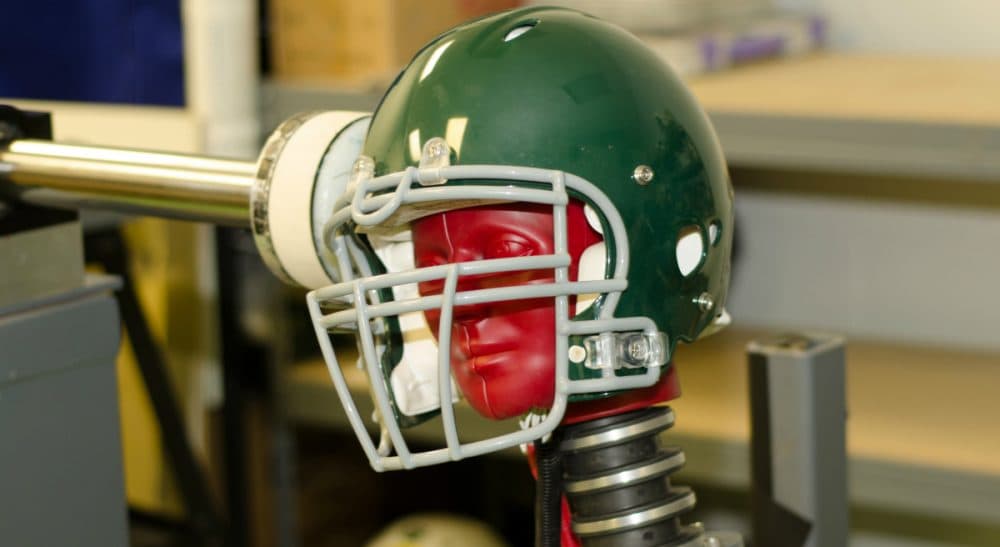Advertisement
In 2015, NFL Players Shouldn’t Be Hearing About Concussions And Their Repercussions For The First Time

Before we learned that evidence of Chronic Traumatic Encephalopathy in the brains of deceased football players was the rule rather than the exception, and before the publication of "League of Denial," the book that so powerfully exposed the dishonesty and hypocrisy of the National Football League and its team doctors, and before the release of the documentary film of the same name, I had a conversation with NFL spokesperson Greg Aiello. We talked about concussions and brain damage.
At one point he said something like, “Lots of retired NFL players don’t have brain damage.”
[the NFL itself] has acknowledged that about 30 percent of current players can expect to experience the symptoms of brain damage...
I said, “Spokespeople for the tobacco companies used to say that lots of people who smoke haven’t gotten lung cancer or heart disease.”
Then we talked about some other things.
Last week, following the retirement of one 24-year-old NFL player who was concerned about his long-term health, I spoke with another player who’d only been in the league for a year. His name is Andre Williams. He’s a running back for the New York Giants, and he has no intention of retiring. He said he’d never had a concussion, though he also said that when he was in sixth grade, he’d gotten hit during a football game, and “everything turned yellow.” I didn’t tell him that former football player and pro wrestler Chris Nowinski, who now works to educate players, coaches and everybody else about CTE, had told me that the symptom Williams described is an indication of a concussion, no matter that he hadn’t been knocked unconscious. I didn’t want to interrupt him. Maybe I should have.
Also last week, perhaps indignant that a 24-year-old would choose to retire from the NFL, Dr. Joseph Maroon, who is employed by the Pittsburgh Steelers, said that riding a bicycle is more dangerous than playing in the league. He also claimed that the risk of CTE had been “overexaggerated,” which is one “over” worse than “exaggerated.”
The widows and children of the former players who’ve suffered with CTE might argue with that characterization, as might the NFL itself, which has acknowledged that about 30 percent of current players can expect to experience the symptoms of brain damage.
Besides hosting Only A Game, I teach English. One of the frustrations of that job is having to tell students year after year that subjects must agree with verbs and that they should learn the difference between “their” and “there.” But that’s built into teaching, because many educators encounter a new group of students each semester. Teach long enough and you’ll realize that the folks in your current class weren’t born when you took up the profession. So each student might be hearing that stuff about “their” and “there” for the first time, unlikely as that might seem.
Today, I’m feeling the same sort of frustration with respect to my job hosting Only A Game.
They can choose to play, of course, but it’s supposed to be an informed choice...
Because in 2015, players in the NFL shouldn’t be hearing about concussions and their repercussions for the first time, any more than they should be hearing one of the men responsible for their health saying that riding a bicycle is more dangerous than playing pro football. These guys have supposedly been getting educated about the dangers of CTE and various other consequences of their work by the college coaches for whom they played and by the NFL. They can choose to play, of course, but it’s supposed to be an informed choice these days, and shouldn’t they be beyond thinking they’ve never suffered concussions if, in fact, they have? The NFL itself is supposed to be telling these guys what it means if, after they get hit, everything turns yellow.
And should a doctor employed by an NFL team be saying the risks of CTE are “overexaggerated?”
Ten years ago, before Dr. Bennett Omalu first linked CTE to the head trauma built into football, Dr. Maroon’s remarks might have been charitably characterized as silly. Now, they are enough to make anybody who heard Dr. Maroon wonder if he’d been hit in the head.
